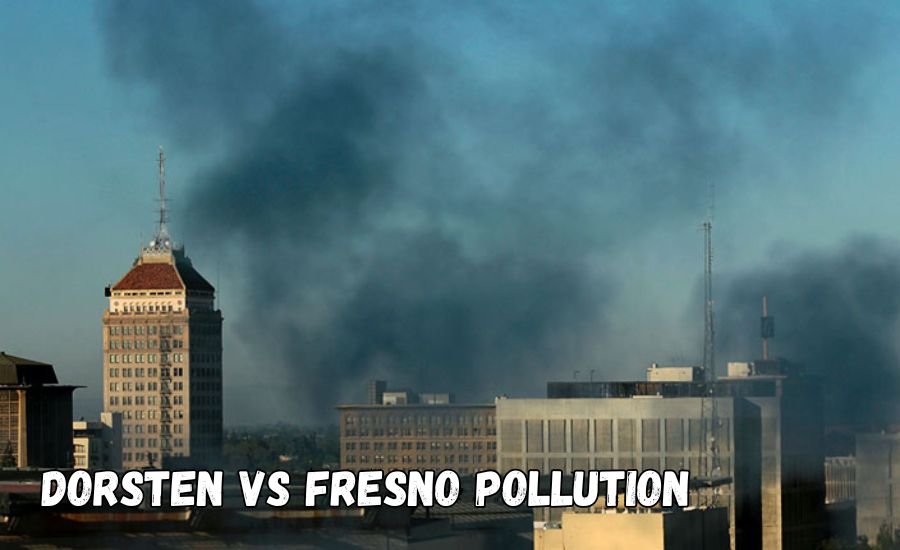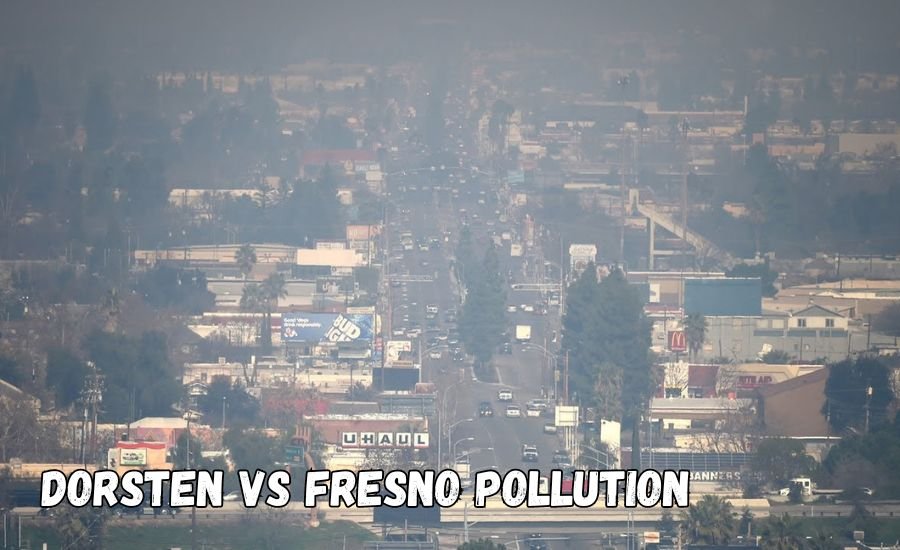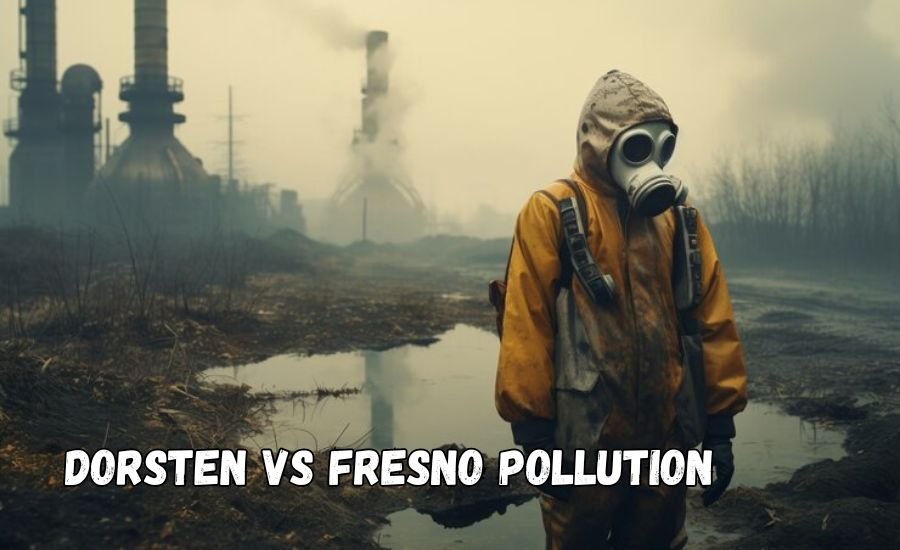Pollution affects everyone, but the scale and type of pollution vary across cities. In this article, we’ll take an in-depth look at two very different cities: Dorsten in Germany and Fresno in California. Both cities face their own unique pollution challenges, but there are also common threads, such as air quality issues and water contamination concerns. Understanding the pollution levels in both places will help highlight the environmental problems faced by these cities and offer insights into possible solutions.
Let’s begin by comparing air and water pollution, the health effects, and the efforts being made to tackle these problems in Dorsten and Fresno.
Dorsten vs Fresno: A Quick Overview
Dorsten, located in Germany’s North Rhine-Westphalia, has an industrial background due to its location in the Ruhr region, a historically significant industrial zone. On the other hand, Fresno, situated in California’s San Joaquin Valley, suffers from agricultural pollution, vehicle emissions, and wildfires. While the types of pollution may differ, both cities struggle with air and water contamination that affect public health and the environment.
Air Pollution: Comparing the Skies of Dorsten and Fresno
Dorsten’s Air Quality
Historically, Dorsten, being part of the Ruhr industrial region, experienced severe pollution due to coal mining and steel production. However, over the past few decades, Germany’s strict environmental laws have significantly reduced air pollution. The European Union (EU) has introduced tight regulations to curb industrial emissions, focusing on reducing particulate matter (PM2.5, PM10), nitrogen dioxide (NO2), and sulfur dioxide (SO2).
According to recent data, Dorsten’s Air Quality Index (AQI) usually stays in the “Good” or “Moderate” range, with occasional spikes due to transportation emissions and nearby industrial activities. Dorsten’s transition toward renewable energy sources has also played a key role in improving air quality.
Fresno’s Air Quality
On the other side of the Atlantic, Fresno’s air quality tells a different story. Fresno consistently ranks among the most polluted cities in the United States. The American Lung Association regularly places Fresno in its lists of cities with poor air quality. This is largely due to a combination of factors:
- Agricultural practices: The San Joaquin Valley is an agricultural hub, and pesticides, fertilizers, and dust contribute to air pollution.
- Vehicular emissions: Major highways passing through Fresno lead to a high level of traffic-related pollution.
- Wildfires: In recent years, wildfires have become a seasonal problem, releasing smoke and fine particulate matter into the air.
Fresno often experiences AQI levels that are in the “Unhealthy” or even “Very Unhealthy” ranges, especially during the summer and fall months when wildfires are most common. Long-term exposure to these poor air conditions can lead to serious respiratory issues, particularly in children and the elderly.
Water Pollution: The Hidden Threat Beneath the Surface
Water Pollution in Dorsten
Dorsten, much like other industrial cities, has a history of water pollution due to the industrial waste that once entered rivers and groundwater systems. However, thanks to strict EU water regulations, the city has seen significant improvements. Industries are now required to treat wastewater before releasing it into water bodies, and constant monitoring ensures that pollution levels are kept within safe limits.
That said, Dorsten is not entirely free from water issues. Occasionally, pollutants like nitrates and heavy metals from agricultural runoff can affect water sources. However, rigorous water treatment facilities are in place to ensure that drinking water remains safe.
Water Contamination in Fresno
Water pollution is a persistent issue in Fresno, with the city often struggling with nitrate contamination due to agricultural runoff. The excessive use of fertilizers and pesticides in nearby farmlands causes these chemicals to seep into groundwater supplies. Fresno also faces challenges related to industrial waste, which has been linked to water contamination in certain areas.
The situation is particularly dire for rural communities around Fresno that rely on well water, as many do not have access to clean, treated water. Fresno’s water quality is frequently monitored, but infrastructure upgrades are needed to address the problem long-term. Local governments and non-profit organizations have been working to provide water filters and public awareness campaigns to mitigate the risks.
Health Implications of Pollution in Dorsten and Fresno

Health Risks in Dorsten
Despite the improvements in air and water quality, Dorsten’s residents are still at risk for certain health conditions related to pollution:
- Respiratory diseases: Even moderate levels of air pollution can cause asthma and chronic obstructive pulmonary disease (COPD).
- Cardiovascular issues: Long-term exposure to air pollution is linked to heart diseases and stroke.
- At-risk populations: The elderly and individuals with pre-existing health conditions are more vulnerable to the effects of pollution.
Thanks to Germany’s healthcare system and environmental initiatives, these risks are managed, but pollution remains a concern for long-term public health.
Health Concerns in Fresno
Fresno’s poor air quality poses more significant health risks compared to Dorsten. The high levels of particulate matter and ozone have led to an asthma epidemic in the region, with children and the elderly being the most affected. Bronchitis, pneumonia, and chronic lung conditions are also prevalent in the population. Studies have shown that residents of Fresno are at higher risk of cardiovascular diseases and premature death due to long-term exposure to air pollution.
Water contamination also poses significant health risks. Nitrate contamination in drinking water has been linked to various cancers and birth defects in the affected areas. The combined impact of air and water pollution makes Fresno a particularly challenging environment for maintaining good health.
Comparing Environmental Policies: Dorsten’s Success vs Fresno’s Challenges
Dorsten’s Environmental Policies
Dorsten benefits from European Union environmental regulations, which are among the strictest in the world. Germany has led the way in terms of:
- Emissions reduction: Dorsten’s industries have shifted towards cleaner production methods and have implemented emission controls.
- Renewable energy: The city is part of Germany’s transition to solar, wind, and hydropower, further reducing air pollution.
- Green infrastructure: Parks, bike lanes, and public transport systems have been expanded to promote sustainable living.
The German government provides financial incentives for both individuals and businesses to reduce their carbon footprint, helping Dorsten become a cleaner and more environmentally friendly city.
Fresno’s Ongoing Struggles
Fresno faces more obstacles when it comes to combating pollution, despite various environmental initiatives. California’s Cap-and-Trade Program has been effective at reducing emissions at the state level, but Fresno’s specific geography and economy make it difficult to solve all its pollution problems.
- Agriculture: Fresno’s agricultural industry is both its lifeblood and its biggest environmental challenge. Reducing pollution from farming practices while maintaining economic output is a delicate balancing act.
- Transportation: The California Air Resources Board has set goals to promote the use of electric vehicles and reduce traffic emissions, but these initiatives are still in the early stages.
- Wildfires: Wildfire season is an unpredictable and significant source of pollution. While state and local governments are working on forest management and fire prevention, the effects of climate change are making wildfires harder to control.
Fresno has made progress, but the city still faces environmental and infrastructure challenges that make its pollution problems more complex.
What Can Be Done? Learning from Dorsten and Fresno’s Pollution Battles

Despite their differences, both Dorsten and Fresno can learn from one another. Dorsten’s strict environmental regulations and transition to renewable energy provide a valuable model for cities like Fresno, while Fresno’s focus on community involvement and advocacy can inspire Dorsten to further engage its residents in sustainability initiatives.
Potential Solutions for Dorsten
- Increase community participation in environmental initiatives.
- Further reduce emissions by promoting electric vehicles.
- Expand green spaces to improve air quality and reduce the urban heat island effect.
Potential Solutions for Fresno
- Invest in water infrastructure to clean contaminated water sources.
- Promote sustainable agricultural practices to reduce pesticide and fertilizer runoff.
- Implement better forest management to prevent wildfires from affecting air quality.
- Expand public transport and promote the use of renewable energy sources.
Conclusion
In comparing Dorsten vs Fresno pollution, we see two cities facing significant environmental challenges, albeit in different ways. Dorsten’s journey toward cleaner air and water offers hope for other cities, while Fresno’s ongoing struggles highlight the complexity of balancing economic growth with environmental sustainability.Whether you live in Dorsten, Fresno, or anywhere else, you can take action today. By advocating for stricter environmental policies, supporting clean energy, and participating in community-driven solutions, you can make a real difference in the fight against pollution.
Stay informed with the latest news and updates on Techi Boomb
